The Strategic AI Implementation Framework: When to Choose Workflows vs. AI vs. Human-Led Processes
I spend way too much time in AI entrepreneurship Facebook groups, and I keep seeing the same pattern repeat: founders posting screenshots of broken AI agents asking for troubleshooting help, while in the same thread sharing manual processes that basic workflows could have automated years ago.
It's fascinating and frustrating. Everyone wants the sexiest AI solution while ignoring the reliable automation that actually solves their daily operational pain.
After 2+ years of working with AI tools and over 6 years of project management and systems implementation, I've learned that the most strategic approach to AI often means saying no to AI agents—at least initially.
Here's the framework I use to decide when workflows, AI enhancement, or human-led processes actually serve a business's mission and growth.
Why I Always Start with Workflows

When I audit a business's operations, I'm looking for one specific thing: repetitive tasks that require human attention but not human judgment:
Client onboarding sequences
Project milestone tracking
Follow-up email scheduling
File organization
Progress reporting
These are the operational foundations that either support your team's strategic work or constantly interrupt it.
Workflows handle these functions permanently. You build them once, test them thoroughly, and then they run reliably without maintenance.
I've implemented workflows in HighLevel, ClickUp, and various other platforms, and the principle is always the same: eliminate the boring work so humans can focus on the creative, relationship-building, strategic thinking that actually drives mission impact.
The time savings are immediate and measurable. More importantly, the mental bandwidth recovery is transformational. When your team isn't managing administrative coordination, they can focus on the work you actually hired them to do.
Where AI Enhancement Actually Makes Sense

After reliable workflows are managing operational execution, then we can strategically add AI intelligence. This isn't about replacing the workflows—it's about making them smarter. AI writing personalized emails within triggered sequences. AI analyzing incoming data to improve routing decisions. AI generating project briefs based on information workflows have already captured and organized.
This approach gives you intelligence without instability. I've seen too many businesses become dependent on AI agents for core operations, then scramble when those agents start making unpredictable decisions or require constant recalibration.
When you enhance proven workflows with AI, you get the benefit of intelligent automation while maintaining operational resilience.
The technical distinction matters here. Workflows are deterministic—if X happens, then Y occurs, every time. AI-enhanced workflows add conditional intelligence—if X happens, AI evaluates the context and chooses between Y and Z based on criteria you've defined. You get smarter automation without losing predictability.
The Reality About AI Agents
AI agents are genuinely exciting technology, and they'll likely transform business operations eventually. But they're experimental right now, which means someone on your team needs to become an AI troubleshooter. When agents make unexpected decisions, fail to execute properly, or need recalibration, that's not a vendor support ticket—that's your team's responsibility to diagnose and fix.
I'm not anti-AI agent. I'm pro-strategic implementation. The founders I see succeeding with agent technology:
Have already built operational resilience through reliable workflows
Have technical team members who enjoy troubleshooting complex systems
Are implementing agents for specific, high-value use cases where the potential return justifies the maintenance investment
Everyone else is better served by mastering workflow automation first. Build the operational foundation that frees your team for strategic work, then enhance intelligently with AI tools that complement rather than complicate your business operations.
How I Actually Build Strategic Workflows Using The Help Of AI

My process starts with mapping before building, because complex workflows require clear logic before implementation. I document every trigger point, every decision branch, every action sequence, and every connection to subsequent processes. This prevents the trial-and-error building that wastes time and creates brittle systems.
But here's where our Business DNA methodology creates exponential value. Instead of planning workflows based on generic best practices, I plug our workflow documentation template directly into our Business DNA Profile. Then I have Claude write out the entire process—triggers, actions, decision trees, timing, even the specific language for automated communications—using our methodology, our tech stack, and our strategic standards.
What traditionally takes hours of planning and documentation now takes 20 minutes, max. More importantly, the resulting workflow operates according to our business intelligence rather than industry templates. The automation becomes an extension of our strategic thinking, not a replacement for it.
This is the distinction between generic automation and strategic implementation. Generic automation makes businesses operate more efficiently. Strategic implementation makes businesses operate more authentically at scale.
The Implementation Sequence That Works
Based on years of systems work and recent AI integration experience, the sequence that actually serves mission-driven businesses:
Identify the highest-impact administrative tasks that interrupt strategic work daily: • Client delivery coordination • Internal project tracking • Sales sequence management
Build those workflows with reliable, proven tools
Test them thoroughly
Train your team on the new operational rhythm
Measure the time and mental bandwidth recovery
Only then consider AI agent opportunities
When you do add AI agents, do it strategically. Enhance proven workflows rather than replacing them. Choose AI tools that improve decision-making within your existing operational structure rather than requiring you to rebuild everything around the AI's capabilities.
The businesses building the most sustainable AI-enhanced operations aren't the ones with the most experimental tools. They're the ones with the most strategic implementation frameworks—clear criteria for when technology serves their mission rather than distracting from it.
Beyond the Hype Cycle

While everyone debates which AI agent will revolutionize business operations, I'm helping mission-driven founders build systematic operational clarity using proven tools enhanced strategically with AI intelligence. The result isn't just efficiency—it's elevated human capacity focused on work that actually matters.
Your team's creativity, strategic thinking, and relationship-building abilities are irreplaceable. Technology should amplify these capabilities, not compete with them for attention and resources. When you implement AI strategically rather than experimentally, you create space for your team to operate at their highest potential while your systems handle everything else reliably and authentically.
The future belongs to businesses that use AI to become more themselves, not less. That starts with building operational foundations that reflect your strategic intelligence, then enhancing intelligently rather than replacing indiscriminately.


